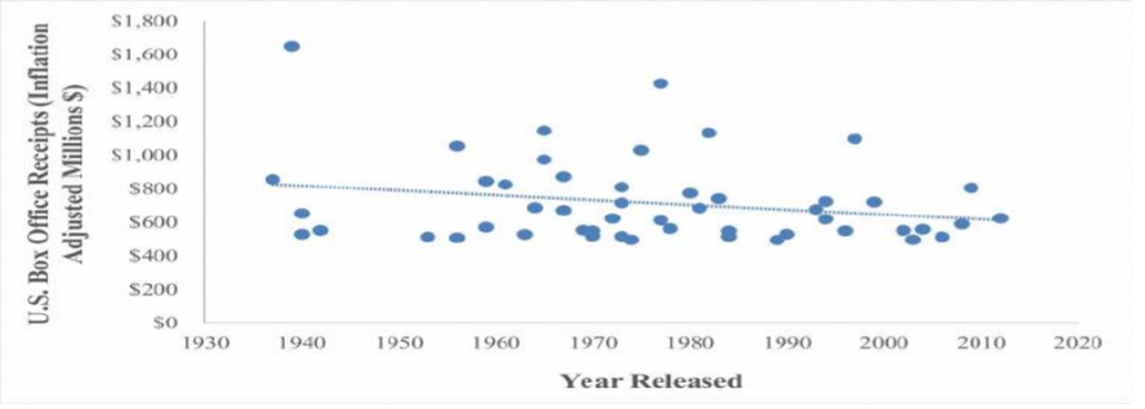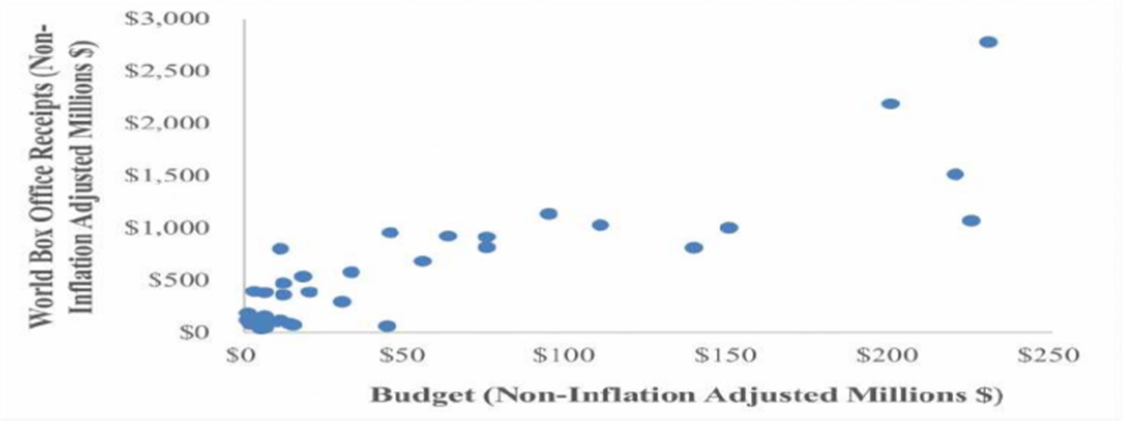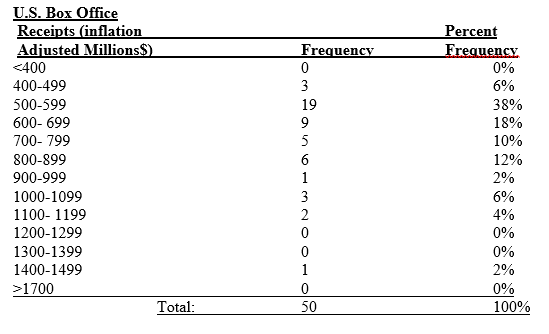Summary
As learned in week two that the most widely recognized type of film appearing in the Top 50 after 1980 is PG-13 rated science fiction/fantasy. Only one G-rated vivified movie was released in the dataset after 1980. According to Variety, the film industry’s top revenue-generating motion pictures have shifted away from films aimed at children and toward films aimed at older moviegoers. The majority of the increase in normal expansion changed musicals accounted for film industry receipts, but this is only one piece of data. Comedy and western films have the lowest average daily change in box office receipts (again, this is just one data point). The data demonstrate that G and P.G. rated films have higher in comparison to R and U.R. rated films. This tendency is encouraging because a larger number of people can see G and P.G. films.
Overall, the visualization of data about different variables in the film industry allows for demonstrating the interdependence and the overall relationship between several pivotal factors that characterize the industry as a whole. This paper presents scatter charts, frequency distributions, and pivot tables to demonstrate the dependence of several variables on each other. This overview allows for making generalizable conclusions on the most and least profitable movie genres, release years, and budget, which might be relevant for movie industry stakeholders.
Scatter Chart: Year Released and the Inflation-Adjusted U.S. Box Office Receipts
The scatter-plot in Figure 1 shows the relationship between the year released (x variable) and the inflation-adjusted U.S. box office receipts (y variable). As shown in this diagram, the film industry’s receipts for the Top 50 motion pictures have been generally flat to slightly declining over several years (adapted to swelling). The incentive for Gone with the Wind is an outlier in this case; however, regardless of whether Gone with the Wind is kept or not, the pattern is level to slightly diminishing. Because this addresses top film receipts, it appears to show that either overall film industry motion picture receipts are not increasing over time or that there is more notable competition for film industry receipts among motion pictures, resulting in top films falling short of the total film industry receipts.

Scatter Chart: the Budget and the Non-Inflation Adjusted World Box Office Receipts
A scatter plot depicting the relationship between the financial plan and worldwide film industry receipts is presented in Figure 2. This scatter graph demonstrates a positive relationship between the financial plan and global film industry receipts. According to all accounts, the top 50 films in the film industry with the largest financial plans have higher box office receipts. Films with larger production budgets may also have larger marketing budgets and wider distribution due to the need for film studios to recoup their investment. This results in higher overall film industry receipts, especially in the United States and internationally.

Inflation-Adjusted U.S. Box Office Receipts
The frequency distribution of U.S. box office receipts is presented in Figure 3. The distribution of inflation-adjusted U.S. box office receipts is skewed to the right. Most of the top 50 movies have inflation-adjusted box office receipts that are less than 700 million dollars. However, a few movies have much greater inflation-adjusted box office receipts. In particular, the movies Gone with the Wind ($1.65 billion) and Star Wars ($1.43 billion) appear to be outliers.

The designation of development changed receipts from the entertainment world in the United States is slanted aside. As per changing entertainment world receipts, most of the Top 50 movies have gross film industry receipts of under $700 million. Nonetheless, a couple of movies have brought about a critical expansion in the measure of cash made by the entertainment world. To be more explicit, the movies Gone with the Wind ($1.65 billion) and Star Wars ($1.43 billion) stick out. The histogram in Figure 4 demonstrates U.S. box office receipts in more detail.

PivotTable: Crosstabulation for Movie Genre and Rating
A Pivot Table was utilized to make the crosstabulation for movie genre and rating, which is presented in Figure 5. According to the crosstabulation, eight of the vivified motion pictures evaluated G are among the top 50 films in box office rankings. This is more crucial than any other type and rating combination for a film. Furthermore, science fiction and fantasy films frequently appear in the Top 50 films, with six PG-13 sci-fi and fantasy films and six PG-13 films appearing in the Top 50 rundown. PivotTable was created by sifting through the data and displaying only films released between 1980 and now. The filtered PivotTable indicates that the most well-known film showing up in the Top 50 after 1980 is PG-13 appraised SciFi/Fantasy, with only one G evaluated vivified film showing up in the dataset after 1980. As per reports, the entertainment world’s top filmmakers have moved from making films for youngsters to making films for more prepared moviegoers.

PivotTable: Average Inflation-Adjusted U.S. Box Office Receipts
The Pivot Table in figure 6 shows the average change in receipts from the U.S. film industry for each film rating-sort combination. The figure contains data on average inflation-adjusted U.S. box office receipts for each genre–rating pair. As shown in this Pivot Table, G-appraised dramatizations had the highest normal expansion changed box office receipts of any dramatization. The majority of the increase in normal expansion changed musicals accounted for film industry receipts, but this is only one piece of data. Except for westerns, comedies and westerns have the lowest normal expansion changed film industry receipts (only a single information point). In this informational index, G and P.G. rated films appear to have higher expansion changed film industry receipts than R, and U.R. rated movies; this is encouraging because G and P.G. rated motion pictures can be seen by more people.

Thus, the presented figures demonstrate data visualization to emphasize the role of particular variables in the bigger picture.
The top 50 movies have inflation-adjusted box office receipts that are less than 700 million dollars.
However, there are a few movies that have much greater inflation-adjusted box office receipts. In particular, the movies Gone With the Wind ($1.65 billion) and Star Wars ($1.43 billion) appear to be outliers. The distribution of inflation-adjusted U.S. box office receipts is skewed to the right. Most of the The top 50 movies have inflation-adjusted box office receipts that are less than 700 million dollars.
However, there are a few movies that have much greater inflation-adjusted box office receipts. In particular, the movies Gone With the Wind ($1.65 billion) and Star Wars ($1.43 billion) appear to be outliers.